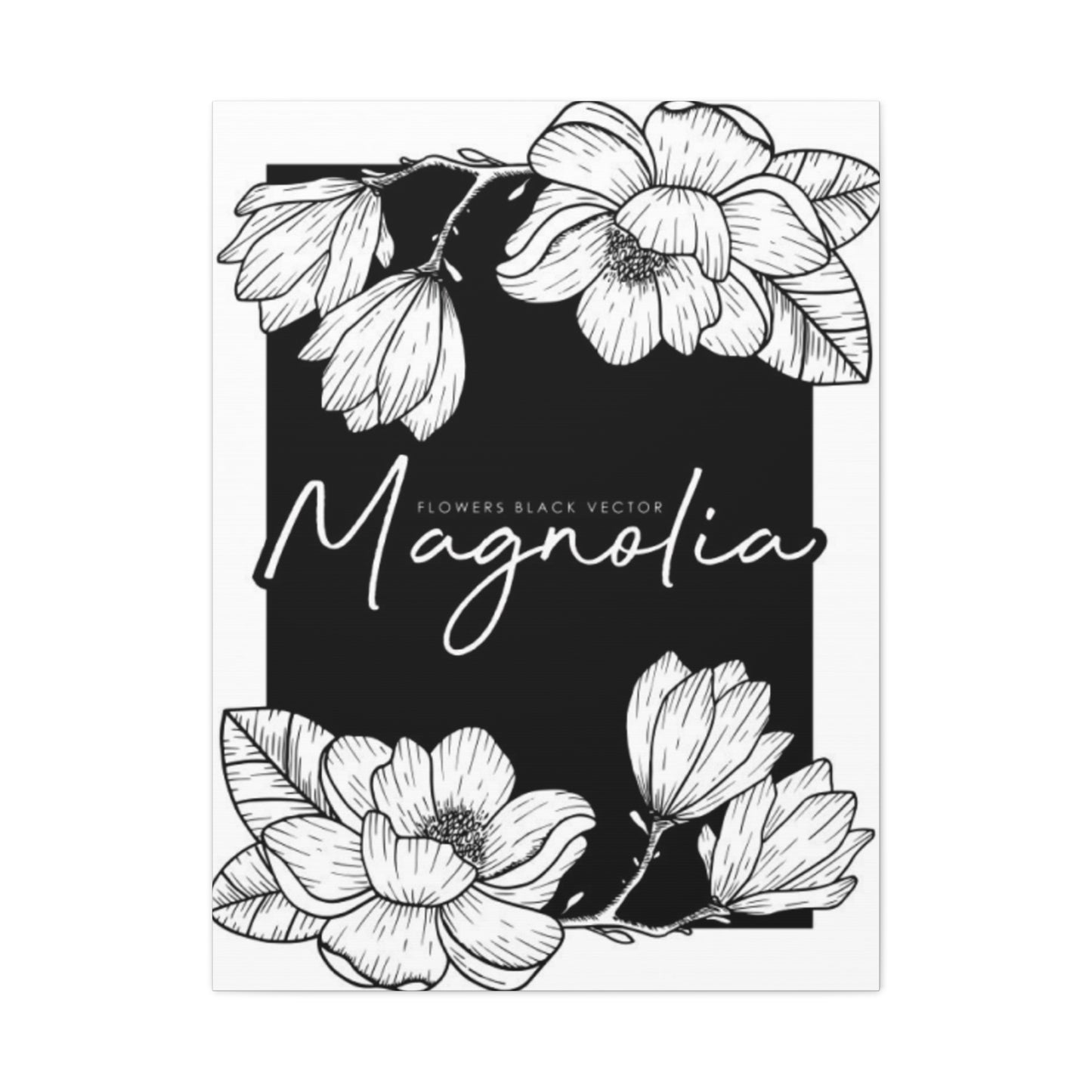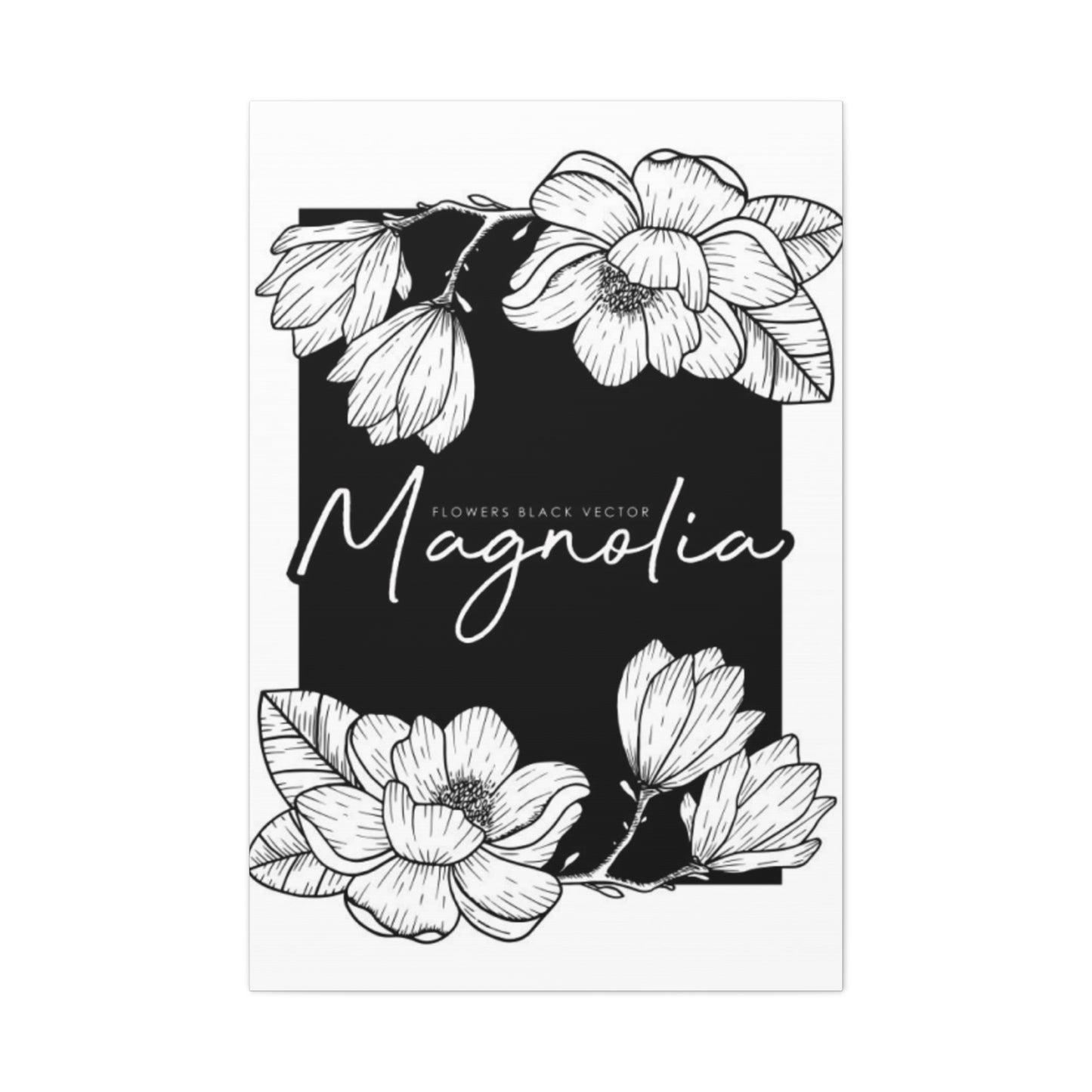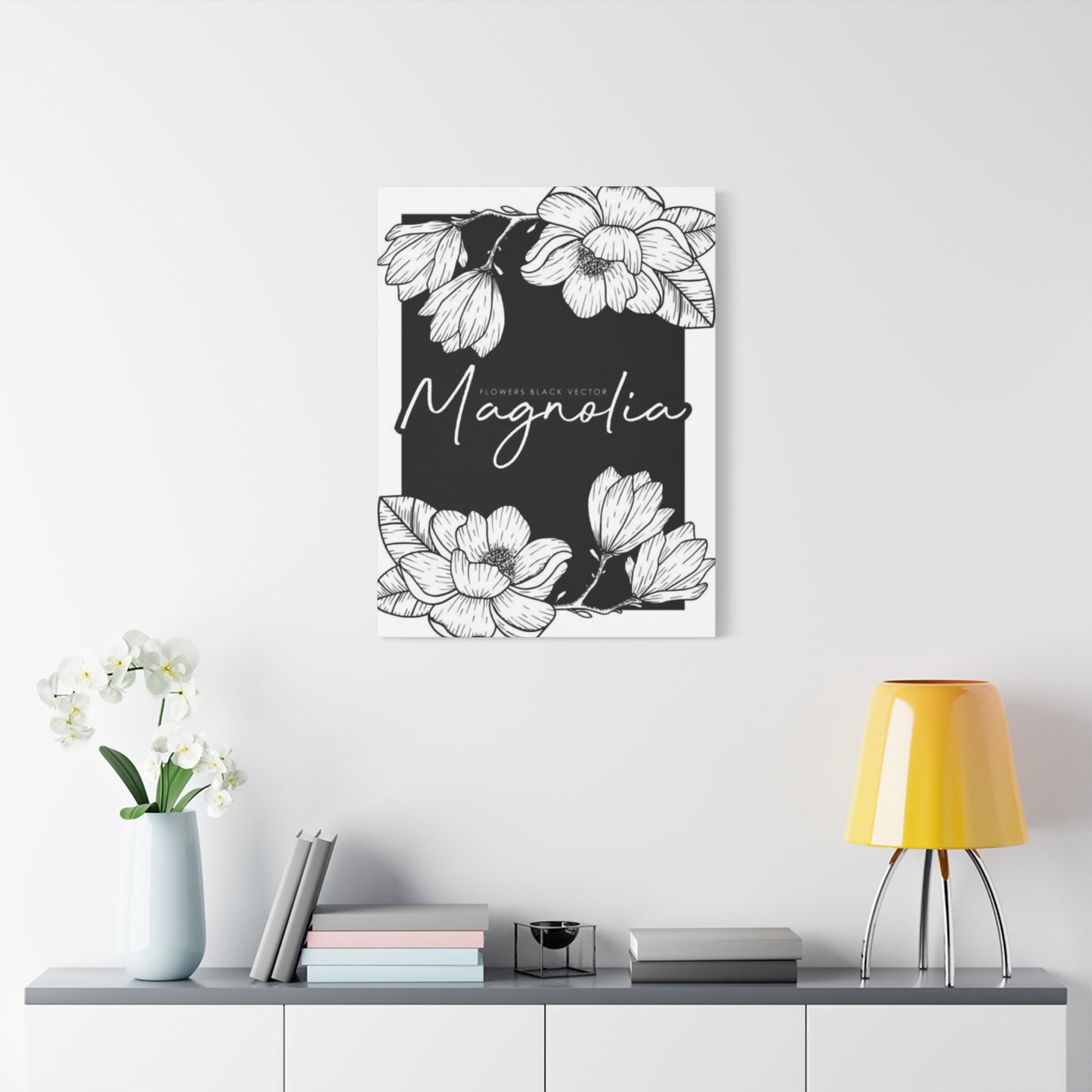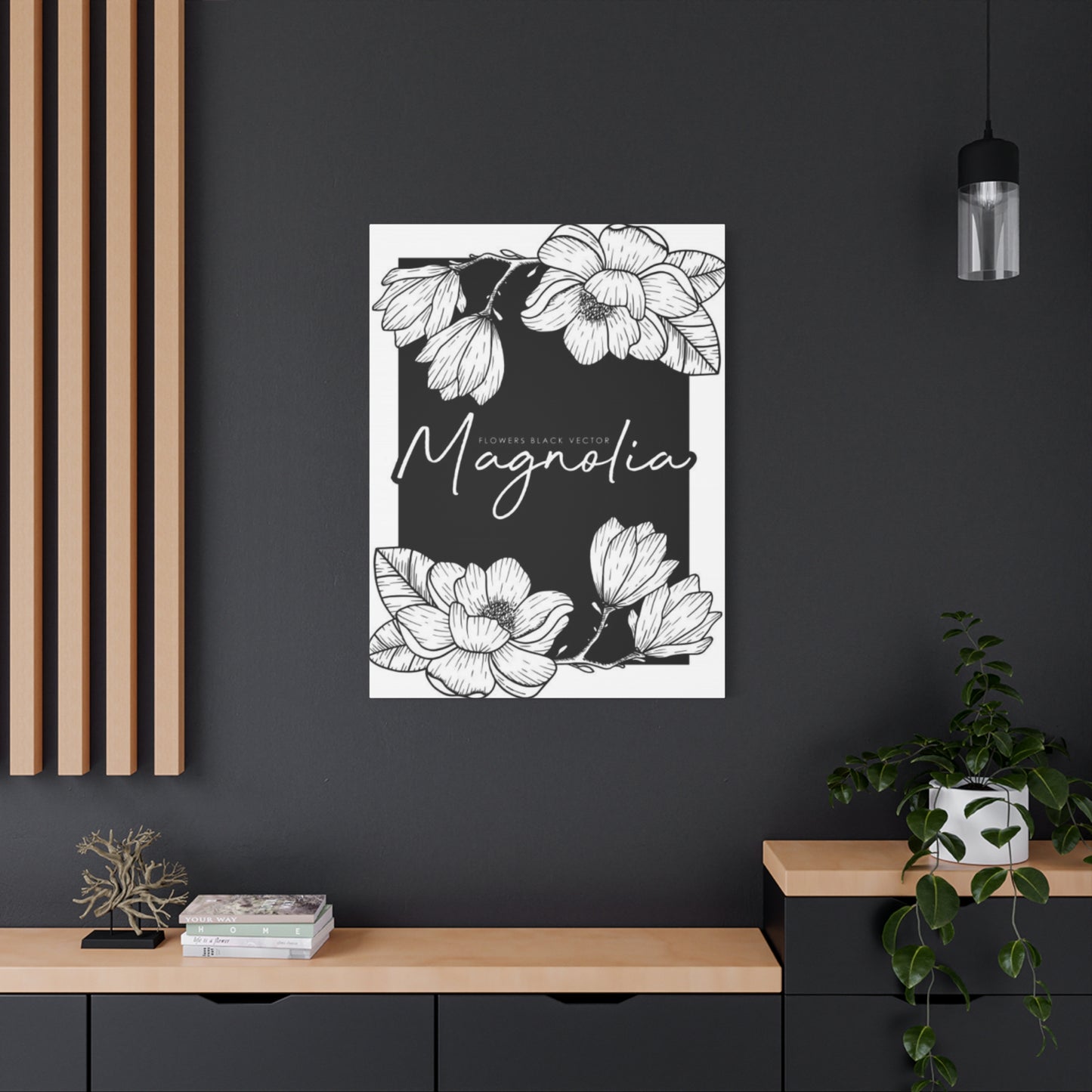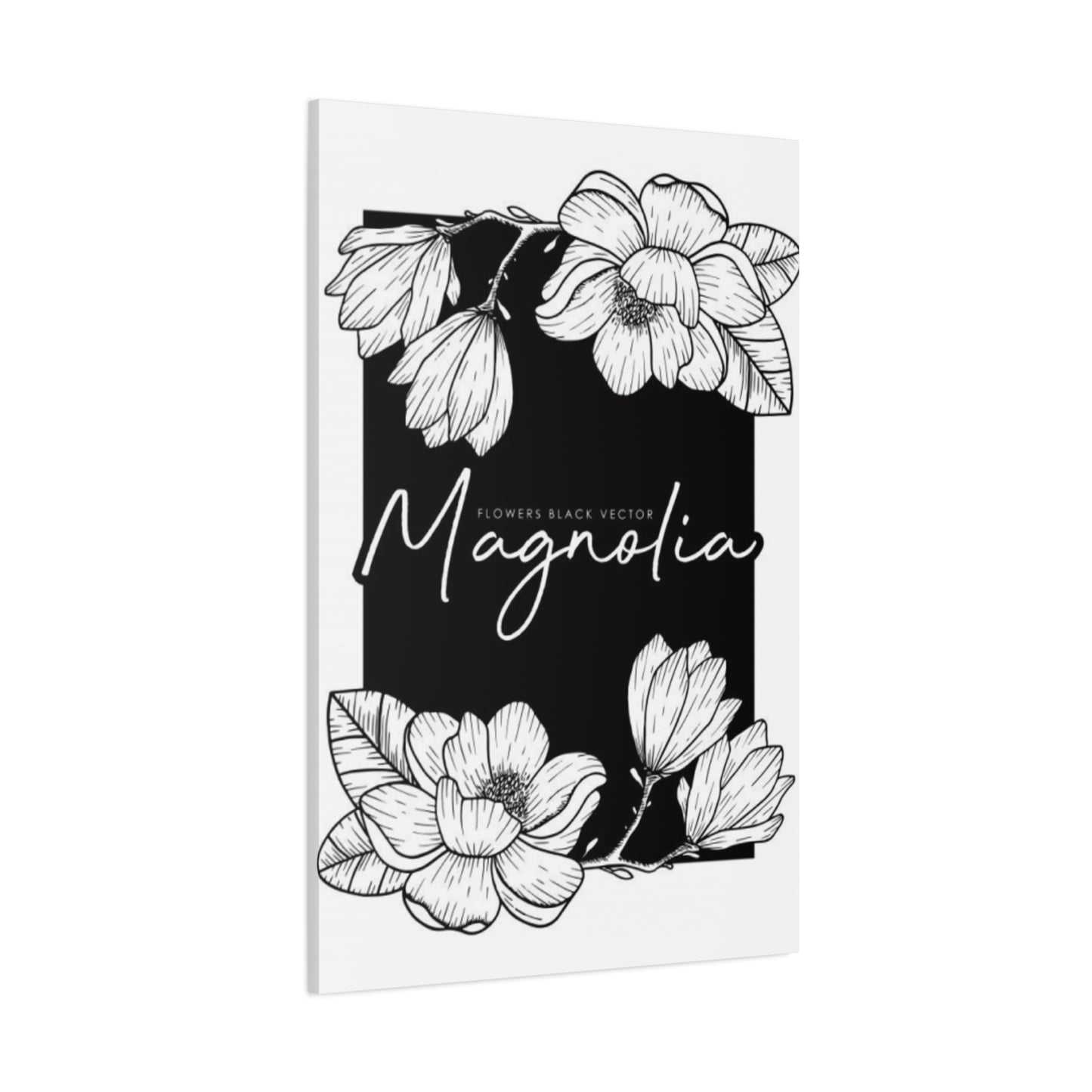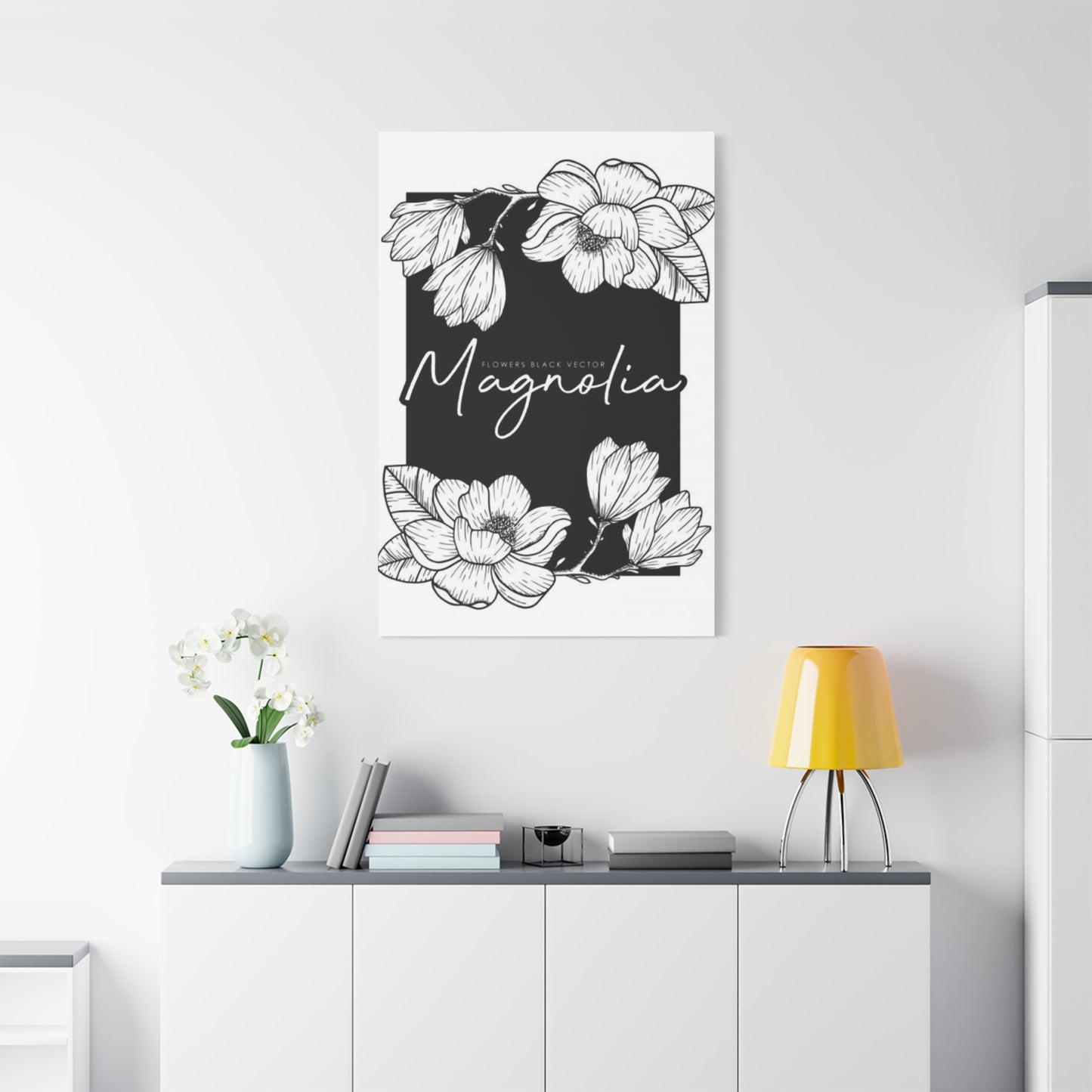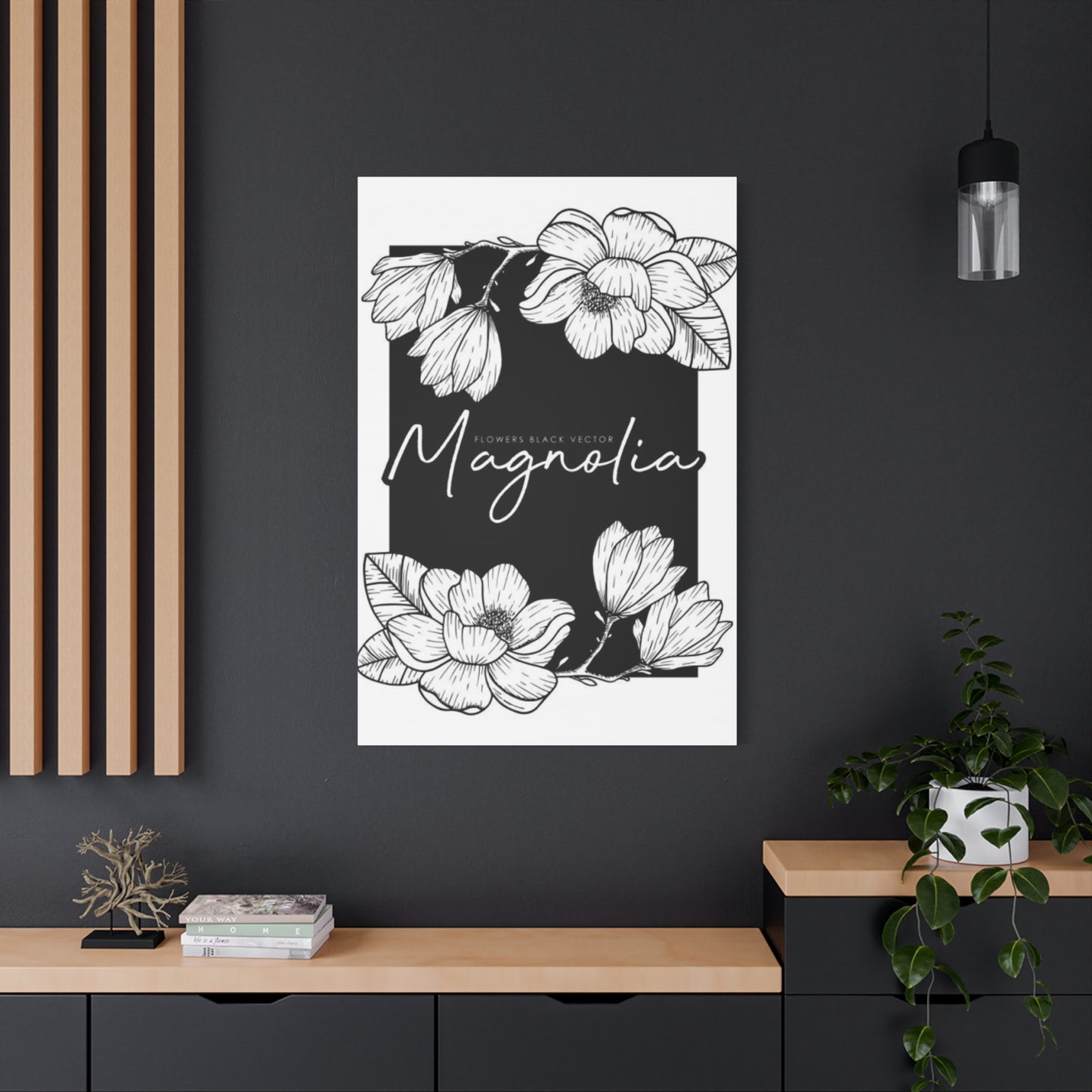Timeless Beauty: A Guide to Decorating with White Magnolia Flower drawing Wall Art
Magnolia flowers have captivated artists, decorators, and homeowners for centuries with their timeless elegance and sophisticated appearance. These magnificent botanical specimens, with their large, pristine white petals and graceful forms, have become increasingly popular as subjects for canvas prints that adorn modern living spaces. The intersection of natural beauty and artistic expression creates wall decorations that transcend typical home furnishings, transforming ordinary walls into galleries of refined aesthetic achievement. When you consider integrating magnolia flower artwork into your interior design scheme, you're not simply selecting a piece of decoration; you're investing in a statement that reflects your personal taste, cultural appreciation, and commitment to creating an environment filled with natural elegance and visual sophistication.
The process of selecting appropriate wall art has evolved significantly over the past decade, driven by technological advances in printing methods, expanded creative possibilities, and increased accessibility to professionally designed botanical artwork. Canvas prints featuring magnolia flowers represent a particularly compelling choice for contemporary interiors because they bridge the gap between traditional fine art and modern practicality. Unlike framed paintings that require specialized care or watercolor works that demand climate-controlled environments, canvas prints offer durability combined with aesthetic excellence. The white magnolia flower, with its pristine petals and architectural beauty, provides an ideal subject matter for canvas reproduction, as the delicate details and subtle tonal variations translate beautifully through modern printing technologies. Whether you're furnishing a bedroom, refreshing a living room, enhancing an office space, or adding personality to a commercial environment, magnolia-themed wall art offers versatile solutions that accommodate diverse design philosophies and color schemes.
Comprehensive Understanding of Magnolia Flowers and Their Artistic Significance
Magnolia flowers belong to an ancient plant family that has existed for millions of years, predating the evolution of flowering plants that most people recognize today. These remarkable specimens emerge from magnolia trees, which are revered in gardens worldwide for their spectacular springtime blooms and distinctive architectural form. The magnolia flower itself represents one of nature's most elegant creations, featuring large petals that can measure up to twelve inches in length, displaying a smooth, waxy texture that catches light in captivating ways. The white varieties, in particular, possess an almost ethereal quality that has inspired countless artists throughout history to capture their beauty in paintings, drawings, and prints. The botanical structure of magnolia flowers, with their concentric layers of petals arranged in perfect symmetry, creates natural geometric patterns that appeal to both abstract and representational artists. This inherent visual harmony explains why magnolia flowers appear so frequently in artistic traditions spanning multiple continents and centuries.
From a cultural and historical perspective, magnolia flowers hold profound significance in numerous societies. In Asian traditions, particularly in Japanese and Chinese artistic practices, magnolia flowers symbolize purity, nobility, and the arrival of spring, making them recurrent subjects in traditional paintings and decorative arts. Western artistic movements, including Romanticism and the contemporary botanical art revival, have similarly embraced magnolia flowers as symbols of refined taste and natural beauty. The flower's association with sophisticated aesthetics has made it a preferred choice for interior designers seeking to communicate elegance and refinement through carefully curated wall decorations. When reproduced on canvas, magnolia flowers retain their capacity to evoke emotional responses in viewers, creating spaces that feel calming, refined, and aesthetically purposeful. The white coloration of certain magnolia varieties adds an additional dimension of sophistication, as white itself carries associations with cleanliness, purity, and timelessness across most cultural contexts.
The artistic representation of magnolia flowers in drawing form requires considerable skill and attention to botanical detail. Artists who specialize in creating magnolia flower drawings must understand the complex interplay of light and shadow that defines the flower's three-dimensional form, the subtle color variations within the white petals, and the architectural relationships between different components of the bloom. Professional artists employ various techniques to capture these elements, including pencil work that emphasizes detail and texture, watercolor approaches that highlight delicate tonal shifts, and mixed media compositions that combine multiple artistic methods to achieve maximum visual impact. When these carefully executed drawings are transformed into canvas prints through advanced reproduction technologies, the artistic vision is preserved and enhanced, resulting in wall art pieces that function simultaneously as botanical illustrations and fine art compositions. The translation from original artwork to canvas print represents a crucial moment in the creative process, as the printing technology must accurately capture the subtle details, tonal ranges, and textural elements that define the original artist's vision.
Detailed Examination of Canvas Print Technology and Production Methods
Canvas prints have emerged as a dominant form of wall art decoration over the past two decades, driven by revolutionary advances in digital printing technology that now allow artists and manufacturers to reproduce detailed artwork with unprecedented accuracy and longevity. The production process for magnolia flower canvas prints begins with a high-resolution digital image of the original artwork, which may be derived from a photograph of a painting, a digital illustration, or a scanned drawing. This digital image undergoes careful color correction and quality assurance to ensure that the final printed product accurately represents the artist's original vision. The correction process involves adjusting color balance, contrast, and brightness settings to achieve optimal visual results while accounting for the specific characteristics of canvas as a printing surface.
The actual printing process employs sophisticated inkjet technology that applies pigmented inks directly onto prepared canvas material in precise, controlled patterns. Modern large-format printers can accommodate canvas rolls measuring up to several feet in width, allowing for the production of wall art pieces in virtually any size configuration desired by consumers or designers. The inks used in professional canvas printing are specifically formulated to adhere effectively to canvas fibers while maintaining color vibrancy and longevity. Archival-quality inks, which are increasingly becoming the standard in professional canvas printing operations, resist fading from exposure to light and maintain their original color characteristics for decades or even centuries under normal indoor display conditions. This technological capability represents a significant advancement over traditional printing methods, as it ensures that your magnolia flower canvas prints will continue to look fresh and vibrant long after installation.
Following the printing stage, canvas prints typically undergo additional processing steps designed to enhance durability, appearance, and longevity. The printed canvas may be treated with protective coatings that provide resistance to dust accumulation, moisture damage, and environmental contaminants. These protective treatments are particularly important in kitchens, bathrooms, or other areas where humidity levels might be elevated or where the artwork could be exposed to cooking odors or steam. The canvas is then typically stretched over wooden frames constructed from kiln-dried timber that has been selected for stability and resistance to warping. The stretching process applies carefully calibrated tension to ensure that the canvas remains taut and maintains its appearance without buckling or sagging over time. The frame is typically constructed from either conventional wood stretcher bars or gallery-wrapped frames that position the canvas so that it wraps around the edges of the frame, creating a contemporary aesthetic that eliminates the need for additional framing.
The quality of canvas printing can vary significantly depending on the specific equipment used, the expertise of the production team, and the standards maintained throughout the manufacturing process. Professional canvas printing facilities invest in state-of-the-art equipment that includes color management systems, humidity control features, and quality inspection protocols designed to ensure consistency across large production runs. When you select canvas prints from reputable manufacturers, you benefit from their investment in technology and expertise. The canvas material itself plays a crucial role in determining the final appearance and longevity of your wall art. Premium canvas products typically consist of a cotton-polyester blend that provides optimal balance between durability, print receptivity, and aesthetic appeal. The weave pattern of the canvas affects how light interacts with the printed image, with tighter weaves generally producing sharper detail reproduction while looser weaves can create a more painterly appearance.
Aesthetic Benefits and Design Advantages of Magnolia Flower Wall Art
Incorporating magnolia flower canvas prints into your interior spaces offers numerous aesthetic advantages that extend far beyond simple visual decoration. The botanical nature of magnolia imagery creates an immediate connection to the natural world, bringing organic elements into environments that may otherwise feel artificial or sterile. This connection to nature has been demonstrated through research in environmental psychology to produce positive effects on mood, stress levels, and overall wellbeing. When you surround yourself with imagery that celebrates natural beauty, particularly with subjects as serene and refined as magnolia flowers, you create an environment that promotes relaxation and mental clarity. The white magnolia flower, in particular, projects an aura of calm sophistication that can transform the emotional tone of an entire room. Unlike more vibrant or complex artwork that might demand attention or stimulate intense emotional responses, white magnolia prints offer a gentle aesthetic presence that enhances without overwhelming.
The color palette of magnolia flower artwork provides exceptional versatility in terms of interior design compatibility. White flowers set against neutral backgrounds integrate seamlessly with virtually any existing decor scheme, from minimalist contemporary spaces to traditional or eclectic arrangements. The architectural quality of magnolia blooms means that they function equally well in spaces devoted to botanical themes as they do in rooms where nature-inspired elements serve as subtle accents rather than dominant design features. Many white magnolia prints feature additional design elements such as leaves, branches, or background gradients that add depth and visual interest while maintaining the refined aesthetic characteristic of this particular flower. Some designs incorporate subtle color variations, perhaps introducing soft greens, warm taupes, or delicate pinks that expand the versatility of the artwork while preserving its fundamental elegance. The ability of magnolia prints to coordinate with diverse color palettes means that you're not locked into a specific design direction once you've selected your wall art; instead, you maintain considerable freedom in developing your overall interior design vision.
The spatial qualities of magnolia flower artwork deserve particular attention, as canvas prints featuring this subject matter create distinct atmospheric effects depending on their size, placement, and surrounding décor elements. Large-scale magnolia prints can function as focal points that anchor room design schemes, drawing the eye and establishing visual hierarchy within the space. A substantial magnolia canvas installed above a sofa, bed, or fireplace mantel can define the entire aesthetic character of a room while maintaining the sophisticated understated quality that characterizes magnolia imagery. Smaller magnolia prints, conversely, can be arranged in gallery wall configurations, grouped in thematic clusters, or strategically distributed throughout multiple rooms to create visual continuity and reinforce design themes. The flexibility of canvas prints in terms of sizing options means that you can select dimensions that perfectly match your specific space and design intentions. Whether you're working with an expansive wall requiring substantial artwork to maintain visual balance or a more intimate space that demands subtlety, magnolia flower prints can be customized to your exact requirements.
The lighting conditions within a room significantly influence how magnolia flower canvas prints appear and function as design elements. Artwork displayed in brightly lit spaces showcases the intricate details and subtle tonal variations characteristic of quality botanical illustrations. Natural light from windows creates dynamic effects as it plays across the canvas surface, creating depth and dimension that might not be apparent in different lighting conditions. Conversely, magnolia prints installed in more dimly lit spaces, such as bedrooms or intimate reading nooks, take on a more mysterious and contemplative quality. The matte finish typical of canvas prints eliminates the glare that can occur with glass-covered framed artwork, making them more comfortable to view for extended periods. This non-reflective quality allows the artwork itself to maintain focus rather than drawing attention to the frame or mount. Some interior designers deliberately manipulate lighting in spaces containing magnolia artwork, installing picture lights or accent lighting that directs attention to the canvas and creates theatrical effects that enhance the visual drama of the piece.
Comprehensive Guide to Selecting the Perfect Magnolia Canvas Print for Your Space
Choosing appropriate magnolia flower canvas prints for your specific environment requires careful consideration of multiple factors that collectively determine whether the final result meets your aesthetic aspirations and functional requirements. The first consideration involves evaluating your available wall space and determining what size of artwork would create appropriate visual balance within your room. A helpful technique involves creating paper templates that match the dimensions of potential canvas prints and taping them to your walls, allowing you to visualize different sizes before making final decisions. This approach eliminates the disappointment that can occur when artwork arrives smaller or larger than anticipated. The dimension of the wall space itself matters considerably; large walls accommodate substantial canvas prints that function as dramatic focal points, while smaller walls or spaces with significant window coverage or furniture placement may require more modest-sized pieces.
The existing color scheme in your room significantly influences which magnolia print variations will work most effectively in your space. Rooms with predominantly neutral color palettes, featuring creams, beiges, grays, and soft whites, benefit from magnolia prints that emphasize the purity and simplicity of white flowers against minimalist backgrounds. These combinations create cohesive, sophisticated interior environments where the artwork integrates seamlessly with the existing aesthetic. Spaces with warmer color undertones, perhaps incorporating terracotta, warm browns, or soft golden tones, pair beautifully with magnolia prints that incorporate subtle warm tones or backgrounds that complement these existing colors. More eclectic spaces that incorporate multiple colors might benefit from magnolia prints featuring diverse design elements that echo and amplify existing decorative themes. The goal throughout this selection process involves choosing artwork that enhances and complements rather than contradicts or conflicts with your existing design scheme.
The artistic style of the magnolia print itself represents another crucial decision point in the selection process. Highly realistic magnolia prints that emphasize botanical accuracy and photographic detail appeal to those who value precision and scientific accuracy in their artwork. These detailed illustrations showcase the intricate structure of magnolia flowers, capturing subtle color variations, delicate petal textures, and minute botanical details. Such pieces work particularly well in professional environments, libraries, study rooms, or spaces devoted to intellectual pursuits. More stylized or abstract interpretations of magnolia flowers appeal to those who prefer artistic expression over strict representational accuracy. These designs might emphasize line work, incorporate interesting compositional strategies, or employ imaginative color approaches while still maintaining clear magnolia flower recognition. Semi-abstract styles that balance realistic representation with artistic interpretation offer middle-ground options that combine the beauty of botanical accuracy with the creativity of artistic vision.
Determining appropriate placement for your magnolia canvas prints requires thoughtful analysis of your room layout, furniture arrangement, and existing decorative elements. Above a sofa or bed, a substantial magnolia print creates an impressive focal point that immediately draws attention upon entering the room. This placement works particularly well in bedrooms, where artwork above the bed creates a natural anchor point for the entire room design. Living rooms featuring sofas centered on walls provide ideal opportunities for installing gallery-style magnolia prints above seating areas. In dining rooms, magnolia prints installed on walls adjacent to dining tables encourage contemplation and create refined atmospheres that enhance the dining experience. Kitchen or breakfast room magnolia prints introduce natural beauty into utilitarian spaces, creating pleasant visual interest while you prepare or consume meals. Home office environments benefit particularly from magnolia artwork, as the calm sophistication of white flowers can reduce stress during work activities while maintaining professional aesthetic standards.
Understanding the relationship between your magnolia canvas prints and surrounding decorative elements ensures that all components work together harmoniously to create cohesive interior spaces. Artwork positioned near decorative accessories, throw pillows, or other textural elements should coordinate in terms of color, style, and overall aesthetic approach. For instance, a realistic magnolia print looks most natural when paired with similarly naturalistic decorative elements rather than with highly abstract or modern sculptural pieces. Conversely, a stylized magnolia artwork might pair more effectively with contemporary furnishings and minimalist decorative approaches. Some interior designers deliberately create visual dialogue between magnolia prints and other botanical elements in the room, perhaps coordinating canvas prints with living plants, botanical textiles, or other nature-inspired decorations. This coordinated approach to design creates sophisticated, thoughtfully curated interior environments that feel purposeful and intentional rather than randomly assembled.
Detailed Information About Different Magnolia Print Design Variations
The artistic community has developed numerous interpretative approaches to magnolia flower artwork, each offering distinct aesthetic qualities and design implications. Single flower magnolia prints represent the most straightforward design approach, featuring a solitary magnolia bloom positioned prominently against a neutral or subtly textured background. These minimalist compositions emphasize the individual flower's architectural beauty and delicate details without distracting elements or additional visual information. Single flower prints create a sense of focused contemplation and work particularly well in spaces devoted to meditation, relaxation, or quiet study. The simplicity of this design approach allows the flower itself to become the complete subject of artistic focus, making every petal, stamen, and subtle tonal variation worthy of viewer attention. This design variation works beautifully in bedrooms, bathrooms, or intimate living spaces where calm sophistication is desired.
Multi-flower compositions featuring clusters of magnolia blooms at various stages of development create more complex and visually engaging designs. These arrangements might show flowers in different orientations, with some blooms in profile, others facing directly forward, and still others partially obscured by overlapping petals. The inclusion of multiple flowers creates visual rhythm and compositional depth that simple single-flower designs cannot achieve. These multi-flower magnolia prints often incorporate varied maturity levels, showing tightly closed buds alongside fully opened blooms and flowers just beginning to open. This variation in bloom stages adds narrative quality to the artwork, suggesting the progression of spring and the cyclical nature of natural beauty. Multi-flower compositions often appeal to those who prefer more visually complex artwork or who desire magnolia prints that make more substantial design statements. These prints work particularly well in larger spaces or in living areas where artwork functions as primary decorative focus.
Magnolia prints incorporating branch and foliage elements create more comprehensive botanical illustrations that place flowers within their natural context. These designs show magnolia flowers developing from branches, with leaves, shoots, and structural elements of the plant integrated into the composition. The inclusion of contextual botanical information transforms the artwork from simple flower portraiture into comprehensive plant studies that have educational as well as aesthetic value. These elaborate designs appeal particularly to those with gardening interests, botanical knowledge, or academic inclinations. The additional visual complexity created by branch and foliage elements provides more information while simultaneously creating more intricate, visually engaging compositions. Interior designers often select this design variation for spaces devoted to learning or intellectual activities, such as home libraries, personal studies, or professional offices. The comprehensive nature of these designs makes them excellent choices for rooms where viewers may spend considerable time, as the additional detail provides ongoing visual interest upon repeated viewing.
Background treatment options vary considerably among different magnolia print designs, with significant implications for both aesthetic impact and interior design compatibility. White or near-white backgrounds create minimalist presentations that emphasize flower clarity and simplicity while maintaining maximum design flexibility in terms of interior coordination. These clean, uncluttered backgrounds allow magnolia flowers to remain the complete visual focus, with no competing design elements demanding attention. Soft, neutral backgrounds incorporating subtle gradients, textures, or muted colors add depth without creating visual distraction. These backgrounds might feature delicate watercolor washes in soft greens, warm creams, or pale grays that complement the magnolia flowers while adding dimensional complexity. Textured backgrounds that employ stippling, cross-hatching, or other artistic techniques create painterly qualities that enhance the perceived artistic value of the piece. More elaborate backgrounds incorporating landscape elements, architectural features, or decorative patterns create comprehensive compositions that function as complete artistic statements rather than simple botanical illustrations.
Color treatment represents another important variation among available magnolia print designs. Pure white magnolia prints that emphasize the flowers' pristine, snowy appearance create the most sophisticated and elegant aesthetic effects. The absolute whiteness of the flowers against complementary backgrounds creates striking visual contrast while maintaining refined aesthetic qualities. Some magnolia prints incorporate subtle color variations, introducing the faintest suggestions of color into the flower petals or background. These might include barely-perceptible hints of pink, cream, yellow, or green that add visual interest without compromising the essential white magnolia character. More boldly colored magnolia prints, though less common, introduce genuine color into the flowers themselves, perhaps rendering them in pale pinks, soft yellows, or warm creams. These color variations can create more dramatic visual impact and offer greater flexibility in terms of coordinating with eclectic or more colorfully varied interior design schemes. Some artists employ sophisticated color techniques where flowers are predominantly white but feature colored stamens, sepals, or other botanical components that add visual interest through accent coloration.
Scale variations among magnolia print designs create different psychological and spatial effects within interior environments. Extremely large-scale magnolia prints that fill substantial wall areas create immersive experiences that command complete visual attention and establish powerful room focal points. These monumental compositions inspire awe and create dramatic design statements that cannot be ignored or dismissed as minor decorative elements. Large-scale prints work exceptionally well in substantial rooms with high ceilings and ample wall space, such as foyer areas, grand living rooms, or commercial reception spaces. Medium-scale prints that occupy moderate wall space function effectively in standard residential rooms, creating notable design presence without overwhelming intimate spaces. Small-scale magnolia prints work beautifully in gallery wall configurations, grouped collections, or as subtle accents in spaces where understated elegance is preferred. The flexibility of canvas prints in terms of available size options means you can select exactly the scale that matches your specific space and design vision.
Examination of Interior Design Styles and Magnolia Print Compatibility
Contemporary design approaches that emphasize minimalism, clean lines, and simplified compositions integrate beautifully with magnolia artwork, particularly designs featuring single flowers against uncluttered backgrounds. The sophisticated simplicity that characterizes contemporary design philosophy aligns perfectly with magnolia flowers' natural elegance and architectural form. Magnolia prints in contemporary spaces typically feature neutral color palettes, minimal decorative elements, and emphasis on the flower itself rather than surrounding design components. These combinations create spaces that feel modern, refined, and intellectually coherent. Contemporary interiors often incorporate magnolia prints as focal points above minimalist furniture pieces, creating visual anchors that define room organization and establish clear design hierarchy. The absence of decorative clutter in contemporary spaces allows magnolia artwork to command complete attention, making every detail of the flower visible and available for viewer contemplation.
Traditional interior design styles, which emphasize historical references, ornamental detailing, and time-honored aesthetic principles, similarly benefit from magnolia artwork integration. Magnolia flowers have been subjects of artistic representation throughout centuries and across numerous cultures, making them natural choices for traditional design schemes. Magnolia prints in traditional spaces might feature ornate frames, more elaborate artistic treatments, or background elements that reference historical decorative traditions. Traditional interiors often incorporate magnolia artwork in prominent locations such as above fireplaces, on feature walls, or in dining room areas where artwork commands respectful attention. The sophisticated elegance of magnolia flowers complements traditional design's emphasis on refinement and cultural sophistication. When paired with period furnishings, classical architectural elements, or traditional color schemes, magnolia prints create cohesive traditional interior environments that feel authentically rooted in historical design principles while maintaining contemporary functionality.
Transitional design styles that bridge contemporary minimalism and traditional formality find particularly rich opportunities for magnolia artwork incorporation. These hybrid approaches combine contemporary clean lines with traditional elegance, creating spaces that feel both modern and timeless. Magnolia prints function beautifully as unifying elements in transitional spaces, their classical significance appealing to traditional sensibilities while their simplified presentation satisfies contemporary aesthetic preferences. Transitional interiors often feature magnolia artwork in moderate scales, displayed above substantial furniture pieces or positioned as primary focal points on prominent walls. The versatility of magnolia imagery means it coordinates effectively with transitional design's eclectic approach to mixing styles, periods, and aesthetic influences. Transitional spaces benefit from the way magnolia prints manage to feel both contemporary and historically grounded, creating visual continuity across design elements that might otherwise seem disconnected or unrelated.
Botanical design themes that emphasize natural elements, plant imagery, and organic forms provide ideal contexts for magnolia print integration. Spaces devoted entirely to botanical themes often feature magnolia prints alongside complementary artwork, living plants, and nature-inspired decorative accessories. These comprehensive botanical environments create immersive nature experiences that celebrate plant beauty and the connections between human creativity and natural form. Botanical-themed spaces might incorporate magnolia prints of varying sizes and styles, creating diverse visual interest while maintaining thematic coherence. Living plants positioned near magnolia canvas prints create engaging visual dialogues between living nature and artistic representation of nature. The combination of living and artistic botanical elements creates particularly enriching interior environments that feel alive and vibrant while simultaneously providing the calm sophistication that botanical imagery characterizes.
Scandinavian design principles, which emphasize simplicity, functionality, natural light, and nature connection, align exceptionally well with magnolia artwork aesthetics. The Nordic design tradition celebrates natural beauty, employs minimal color palettes, and emphasizes the inherent visual interest of natural forms. Magnolia prints fit seamlessly into Scandinavian interiors, often positioned in areas that receive abundant natural light, allowing light play to enhance the artwork's visual qualities. Scandinavian spaces typically feature magnolia prints with minimal framing, gallery-wrapped canvases that blur boundaries between art and wall, or arrangements where artwork integrates seamlessly with white or neutral-colored walls. The calm sophistication of Scandinavian design combines beautifully with magnolia flowers' refined elegance, creating spaces that feel serene, intellectually coherent, and visually restful. Scandinavian interiors benefit particularly from large-scale magnolia prints that demonstrate complete commitment to the beauty of individual natural elements, the very philosophy underlying Scandinavian design traditions.
Eclectic design approaches that combine elements from diverse periods, styles, and cultural traditions create interesting opportunities for creative magnolia print implementation. Eclectic spaces might feature magnolia artwork in unexpected sizes, colors, or compositions that would seem inappropriate in more cohesive design schemes. The versatility of magnolia imagery means that even quite unconventional presentations can succeed within eclectic frameworks. Some eclectic designers deliberately mix magnolia print styles, creating gallery walls featuring multiple interpretations of magnolia flowers rendered in different artistic techniques or by different artists. This diversity of presentation creates visual richness and celebrates the multiple creative perspectives that magnolia flowers inspire. Eclectic spaces benefit from magnolia artwork's sophisticated aesthetic, which prevents the space from feeling chaotic or purposeless despite the intentional mixing of diverse design elements. The refined quality of magnolia imagery provides grounding and coherence that allows other eclectic elements to feel intentional and curated rather than haphazard or disorganized.
Detailed Analysis of Room-Specific Magnolia Print Applications and Considerations
Bedroom environments represent exceptionally popular locations for magnolia artwork installation, as the calming sophistication of white flowers creates ideal conditions for relaxation and peaceful sleep. Large-scale magnolia prints installed above beds function as immediate focal points upon awakening, establishing visual tone for the entire morning experience. The serene quality of magnolia imagery encourages mental calm and reduces anxiety that might interfere with sleep quality. Many sleep science experts recommend surrounding yourself with nature-inspired imagery in bedrooms, as connections to natural beauty promote relaxation and reduce stress hormones that inhibit sleep. Bedroom magnolia prints typically feature gentle, simplified designs that emphasize peaceful qualities rather than visually complex compositions that might stimulate excessive mental engagement. The soft, neutral color palettes characteristic of most magnolia prints coordinate beautifully with the calming color schemes typically employed in bedrooms, such as soft blues, muted purples, warm creams, or pale greens. Some individuals create gallery wall arrangements featuring multiple small to medium magnolia prints, creating comprehensive botanical environments that transform bedrooms into nature sanctuaries.
Living room spaces, which typically function as primary social and family gathering areas, benefit from magnolia artwork that creates impressive visual statements while maintaining welcoming atmospheres. Large magnolia prints installed above sofas command attention from anyone entering the room, establishing powerful room focal points that organize furniture arrangement and create clear design hierarchy. These substantial installations often function as primary decorative features that define entire room aesthetic identities. Living room magnolia prints frequently incorporate design sophistication that facilitates conversation and viewer engagement, with compositions sufficiently complex to reward extended attention while remaining visually restful rather than overstimulating. Some living rooms feature multiple magnolia prints distributed strategically throughout the space, creating visual continuity while avoiding monotonous repetition through variation in size, style, or artistic interpretation. The versatility of magnolia imagery allows living room displays to feel cohesive despite these variations, as all magnolia-themed artwork shares fundamental aesthetic characteristics that create unified visual experiences.
Home office and study environments benefit particularly from magnolia artwork, as the refined sophistication of white flowers supports focus and concentration while creating professional aesthetic impressions. Magnolia prints installed in view of where you work or study create natural focal points for restorative eye breaks during extended work sessions. Research in workplace design demonstrates that views of natural imagery reduce mental fatigue, increase creative thinking, and improve overall psychological wellbeing. Home office magnolia prints often feature realistic, detailed botanical treatments that emphasize the scientific and artistic value of the flowers, creating intellectually engaging artwork that reflects professional aspirations. Medium to large-scale prints work particularly well in home offices, creating sufficient visual presence to function as significant design elements while maintaining the professional seriousness appropriate to work environments. Some home office designs feature gallery wall arrangements combining magnolia prints with framed quotations, academic certificates, or other professional documentation, creating cohesive displays that communicate competence and aesthetic sensibility simultaneously.
Kitchen and dining room spaces represent particularly interesting environments for magnolia print application, as these areas combine functional necessity with opportunities for aesthetic refinement. Magnolia prints installed in kitchen areas introduce natural beauty into spaces devoted to food preparation and consumption, creating more emotionally positive environments for daily culinary activities. Some research suggests that beautiful surroundings while eating can positively influence digestion and increase satisfaction with meals. Dining room magnolia prints, often positioned on walls adjacent to dining tables or above dining room chairs, create sophisticated atmospheres that elevate ordinary meals into more refined experiences. Many individuals report that beautiful dining room surroundings, particularly artwork featuring elegant natural imagery like magnolia flowers, encourage lingering at tables longer and contribute to more meaningful family interactions. Kitchen magnolia prints should generally feature protective coatings or treatments that resist moisture, humidity, and cooking odors that are inevitable in food preparation environments. Dining room prints can typically employ standard canvas treatments, as dining rooms generally maintain more controlled environmental conditions than active kitchen spaces.
Bathroom environments, though often overlooked in terms of artwork display, represent surprisingly suitable locations for magnolia print installation. Bathroom magnolia artwork creates spa-like atmospheres that transform utilitarian spaces into personal retreat areas. The serene, sophisticated quality of white magnolia flowers pairs beautifully with bathroom aesthetics that emphasize cleanliness, tranquility, and personal renewal. Bathroom magnolia prints should employ moisture-resistant treatments and protective coatings designed to withstand elevated humidity levels characteristic of bathrooms. Canvas prints specifically treated for bathroom installation maintain their appearance and integrity despite exposure to steam, moisture, and temperature fluctuations. Many spa designers intentionally incorporate botanical artwork into bathroom environments, as the combination of natural imagery with moisture-resistant elements creates sophisticated personal retreats that support relaxation and wellbeing. Smaller magnolia prints work particularly well in bathrooms, where limited wall space often accommodates modest-sized artwork. Some individuals create gallery wall arrangements in larger bathrooms, establishing comprehensive botanical themes that completely transform the space.
Hallway and entryway areas benefit from magnolia artwork that creates welcoming impressions and establishes visual coherence as people move through homes. Magnolia prints positioned near entryways greet visitors immediately, communicating aesthetic sensibility and establishing expectations for the refined interior spaces beyond. Large hallway magnolia prints create impressive visual statements that occupy otherwise unused vertical space while adding sophistication to transitional areas. Some interior designers deliberately employ magnolia prints to create visual continuity between different room styles and aesthetic approaches, as the universal sophistication of magnolia imagery bridges diverse design philosophies. Hallway and entryway magnolia prints often measure moderately large, as these spaces typically feature ample wall area free from competing visual elements. Multiple magnolia prints distributed along hallway walls create gallery experiences that encourage contemplation while walking through homes, establishing memorable sequences of visual encounters.
Commercial and professional spaces, including medical offices, dental practices, law firms, and corporate reception areas, represent increasingly popular environments for magnolia artwork installation. The sophisticated refinement communicated by white magnolia prints creates positive impressions on clients and patients while supporting professional aesthetic standards. Research in healthcare design demonstrates that calming natural imagery in medical environments reduces patient anxiety and contributes to improved health outcomes. Dental offices and medical practices increasingly incorporate botanical artwork, particularly magnolia prints, into patient waiting areas and consultation rooms. The serene quality of magnolia flowers creates reassuring atmospheres that mitigate medical anxiety and communicate care and professionalism. Law offices and corporate spaces employ magnolia artwork to create environments that feel cultured, intellectually rigorous, and aesthetically refined. These professional applications of magnolia prints demonstrate that this artwork extends well beyond residential decoration into commercial contexts where aesthetic sophistication and psychological support remain valuable.
Comprehensive Guide to Magnolia Print Sizing and Proportion Considerations
Determining appropriate sizes for magnolia flower canvas prints requires careful analysis of your specific wall dimensions, furniture arrangement, and desired visual impact. The rule of proportion suggests that artwork should occupy approximately sixty to seventy-five percent of the available wall space above major furniture pieces such as sofas or beds. This general guideline provides a starting point, though your specific preferences and spatial considerations may warrant deviation from this standard approach. Walls measuring eight feet wide provide ideal opportunities for prints ranging from thirty-six to forty-eight inches wide, creating substantial visual presence without overwhelming the space. Walls measuring ten feet or wider can accommodate sixty-inch to seventy-two-inch prints or even gallery-style arrangements featuring multiple large pieces. Smaller wall spaces, particularly those between windows, doorways, or architectural features, typically work better with modest-sized prints ranging from sixteen to thirty inches wide. These smaller sizes maintain visual balance in constrained spaces while still providing sufficient artistic impact to function as meaningful design elements.
Above sofa installations represent one of the most common magnolia print placements, with specific sizing considerations that ensure proper visual relationships. A sofa measuring seven feet wide typically works well with a print measuring approximately forty to fifty-four inches wide, positioned so that it remains narrower than the sofa itself, maintaining visual balance and preventing overwhelming the furniture beneath. The print should be positioned at least four to six inches above the sofa back, creating clear visual separation between furniture and artwork. This spacing prevents the artwork from appearing to rest on the sofa and maintains architectural clarity in the space. Substantial sofas in large rooms can successfully accommodate even larger prints, measuring sixty to eighty inches wide or even occupying positions spanning entire sofa widths. Conversely, smaller sofas in intimate spaces work better with more modest-sized prints that maintain proportional relationships and prevent the artwork from dominating the space visually.
Bed installations require similar proportional analysis adapted to bedroom-specific spatial considerations. Beds measuring queen-size or larger typically coordinate beautifully with prints measuring approximately fifty-four to seventy-two inches wide. The print positioned directly above the bed should maintain slight narrower dimensions than the bed itself, preventing visual top-heaviness while creating impressive focal points. Bedrooms with high ceilings can accommodate taller vertical-orientation magnolia prints that emphasize vertical dimensions and create dramatic visual effects. Master bedrooms in larger homes often feature substantial print installations measuring seventy-two to ninety-six inches wide or even larger, functioning as room-dominating focal points that establish powerful aesthetic presence. Guest bedrooms and secondary bedrooms typically feature more modest print sizes that maintain visual comfort in smaller spaces. Some designers create gallery wall arrangements featuring multiple magnolia prints at varying sizes, transforming entire walls into comprehensive displays that reward extended viewing and create sophisticated design statements.
Wall space above fireplace mantels presents particular sizing challenges, as these locations often feature architectural complexity that influences appropriate artwork dimensions. Prints should typically measure slightly narrower than the fireplace opening itself, positioning the artwork as visual focal point while allowing the fireplace structure to maintain visual prominence. In fireplaces measuring forty inches wide, prints of approximately thirty-six inches work effectively. Larger fireplace openings accommodating prints of fifty to sixty inches maintain visual balance while creating sufficient artistic presence to coordinate with the fireplace's substantial visual weight. Positioning artwork directly above mantels, typically eight to ten inches above the mantelpiece surface, creates clear visual separation while maintaining unified visual relationships. Some designers position magnolia prints at heights that align with eye level when standing, optimizing viewer engagement and visual comfort. Others deliberately position artwork higher on walls, creating visual drama and drawing the eye upward, which can make rooms feel more spacious.
Final Reflection
Reflecting on this creative journey, I am struck by how the timeless beauty of the white magnolia flower has not only inspired my artistic expression but also mirrored my personal growth throughout this process. Much like the magnolia, which embodies purity, perseverance, and elegance, this experience has encouraged me to cultivate patience, attention to detail, and a deeper appreciation for subtlety in both art and life.Beginning this project, I approached the task with curiosity and a desire to explore the delicate yet striking nature of the white magnolia flower. Drawing it required more than just technical skill—it demanded mindfulness, observation, and respect for the flower’s intricate details. This emphasis on patience and precision taught me to slow down and fully engage with my work, valuing quality over speed.
The process of creating wall art based on such a classic motif reminded me of the importance of timelessness in design. Just as magnolias have been admired for centuries, I learned that art and décor should transcend fleeting trends and instead aim to evoke enduring feelings of calm and beauty. This mindset shifted how I view creativity—not as a race to produce but as a journey toward meaningful expression.Throughout this experience, I also gained a deeper understanding of how art can transform a space and influence emotions. The white magnolia’s soft petals and graceful form bring a sense of serenity and sophistication to any room, demonstrating how thoughtfully chosen wall art can shape atmosphere and mood. This insight extended beyond decoration; it highlighted how aesthetics connect with our well-being and environment.
Furthermore, the project challenged me to balance artistic vision with practical considerations such as composition, scale, and color harmony. These elements are essential to ensuring that the artwork complements rather than overwhelms the surrounding space. This taught me the value of adaptability—being open to revisions and refining ideas to create a cohesive, elegant final piece.In conclusion, this journey with white magnolia flower drawing wall art has been more than a creative exercise—it has been a reflection on growth, patience, and the pursuit of beauty that lasts. Like the magnolia, which stands resilient through seasons, I have learned to embrace challenges with grace and to approach creativity with intention. This experience has enriched my appreciation for art’s power to inspire and transform, and it motivates me to continue creating with both heart and mindfulness.



















